

| Cruise Region : South America / Antarctica |
| Company : Azamara Cruises |
| Ship : Azamara Journey |
| Journey Start : Wed 17 Feb 2027 |
| Journey End : Wed 10 Mar 2027 |
| Count Nights : 21 night |
| Day | Date | Port | Arrival | Departure |
|---|---|---|---|---|
| 1 | 17.02 Wed | Buenos Aires / Argentina | ||
| 2 | 18.02 Thu | Buenos Aires / Argentina | 18:00 | |
| 3 | 19.02 Fri | Montevideo / Uruguay | 08:00 | 22:00 |
| 4 | 20.02 Sat | Punta del Este / Uruguay | 08:00 | 22:00 |
| 5 | 21.02 Sun | Day at sea / Sea | 03:00 | |
| 6 | 22.02 Mon | Day at sea / Sea | ||
| 7 | 23.02 Tue | Day at sea / Sea | ||
| 8 | 24.02 Wed | Port Stanley, Falkland Islands / Great Britain | 07:30 | 17:00 |
| 9 | 25.02 Thu | Day at sea / Sea | ||
| 10 | 26.02 Fri | Day at sea / Sea | 06:00 | |
| 11 | 27.02 Sat | Day at sea / Sea | ||
| 12 | 28.02 Sun | Day at sea / Sea | 18:00 | |
| 13 | 1.03 Mon | Day at sea / Sea | ||
| 14 | 2.03 Tue | Ushuaia / Argentina | 08:00 | |
| 15 | 3.03 Wed | Sailing the Beagle Channel | 08:00 | 12:00 |
| 16 | 4.03 Thu | Ushuaia / Argentina | 07:00 | |
| 17 | 5.03 Fri | Punta Arenas / Chile | 07:00 | 19:30 |
| 18 | 6.03 Sat | Chilean fjords / Chile | 06:00 | |
| 19 | 7.03 Sun | Chilean fjords / Chile | 18:00 | |
| 20 | 8.03 Mon | Puerto Chacabuco / Chile | 07:00 | 14:30 |
| 21 | 9.03 Tue | Puerto Montt / Chile | 08:00 | 17:00 |
| 22 | 10.03 Wed | Day at sea / Sea | ||
| 23 | 11.03 Thu | San Anton / Cuba | 07:00 |
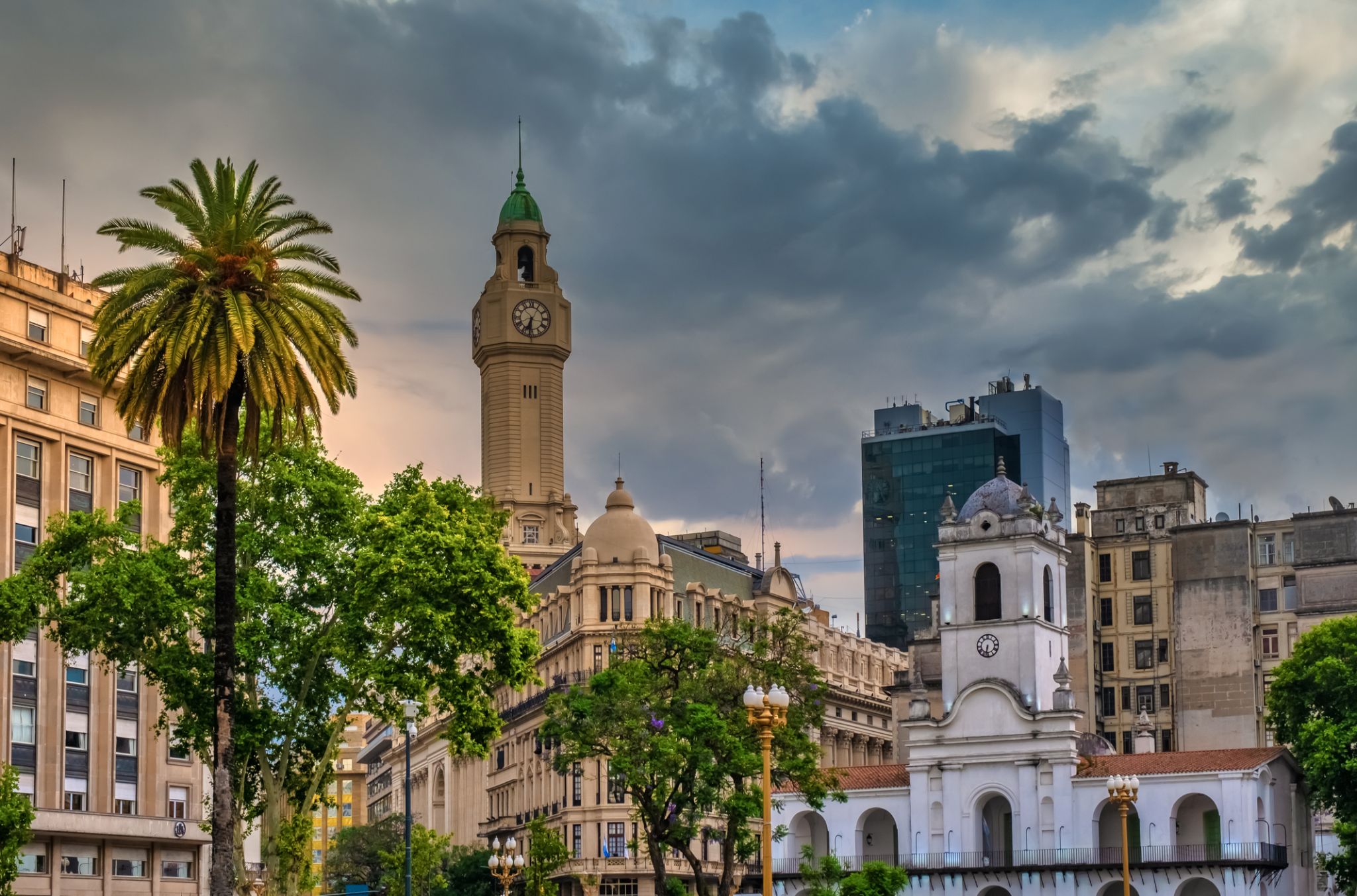
the capital city and chief port of Argentina, in the eastern central part of the country, on the Plata River; population 3,042,600 (est. 2008).

the capital city and chief port of Argentina, in the eastern central part of the country, on the Plata River; population 3,042,600 (est. 2008).
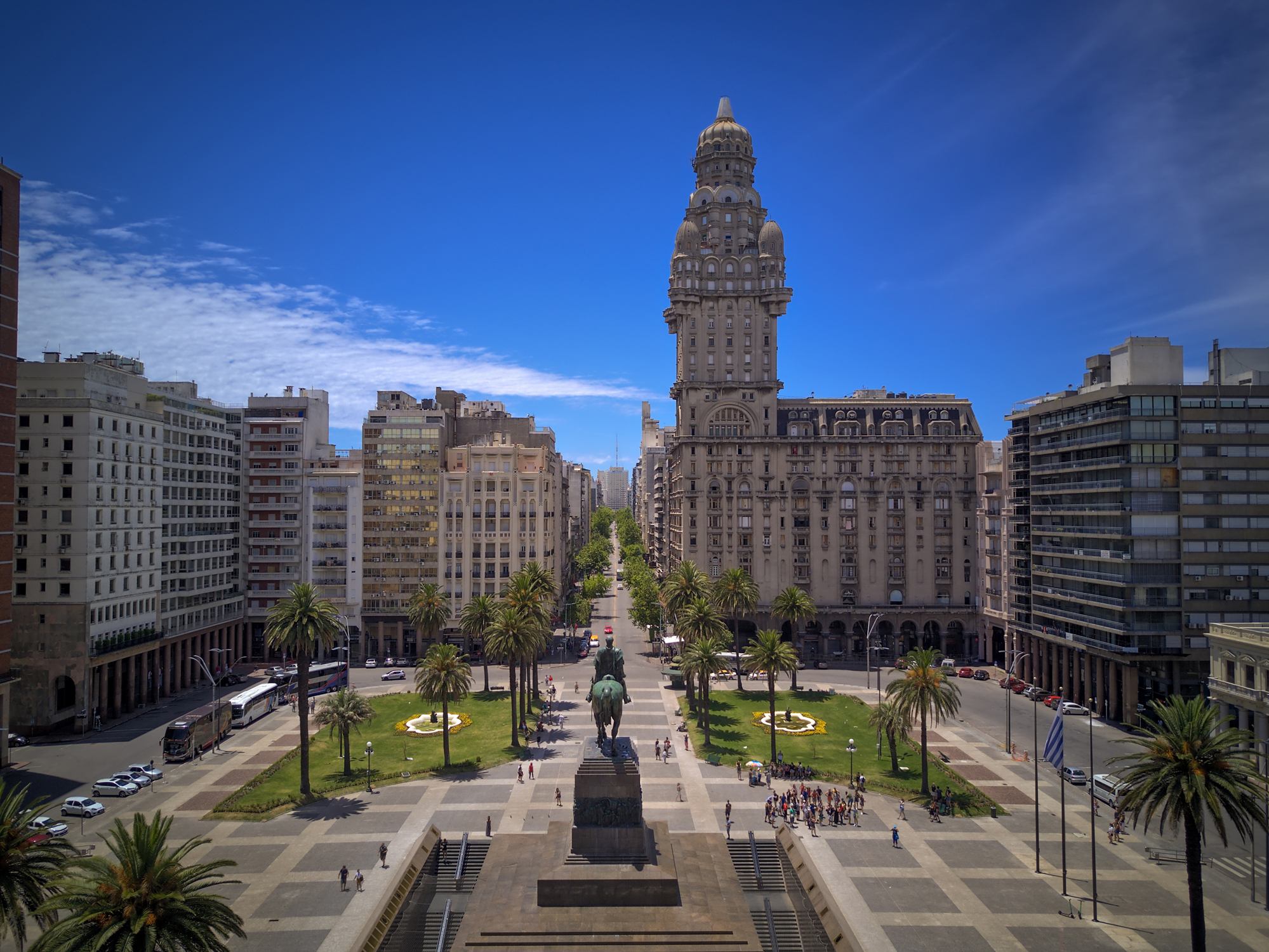
Montevideo is the capital and largest city of Uruguay. According to the 2011 census, the city proper has a population of 1,319,108 (about one-third of the country's total population) in an area of 201 square kilometres (78 sq mi). The southernmost capital city in the Americas, Montevideo is situated on the southern coast of the country, on the northeastern bank of the Río de la Plata.
The city was established in 1724 by a Spanish soldier, Bruno Mauricio de Zabala, as a strategic move amidst the Spanish-Portuguese dispute over the platine region. It was also under brief British rule in 1807. Montevideo is the seat of the administrative headquarters of Mercosur and ALADI, Latin America’s leading trade blocs, a position that entailed comparisons to the role of Brussels in Europe.
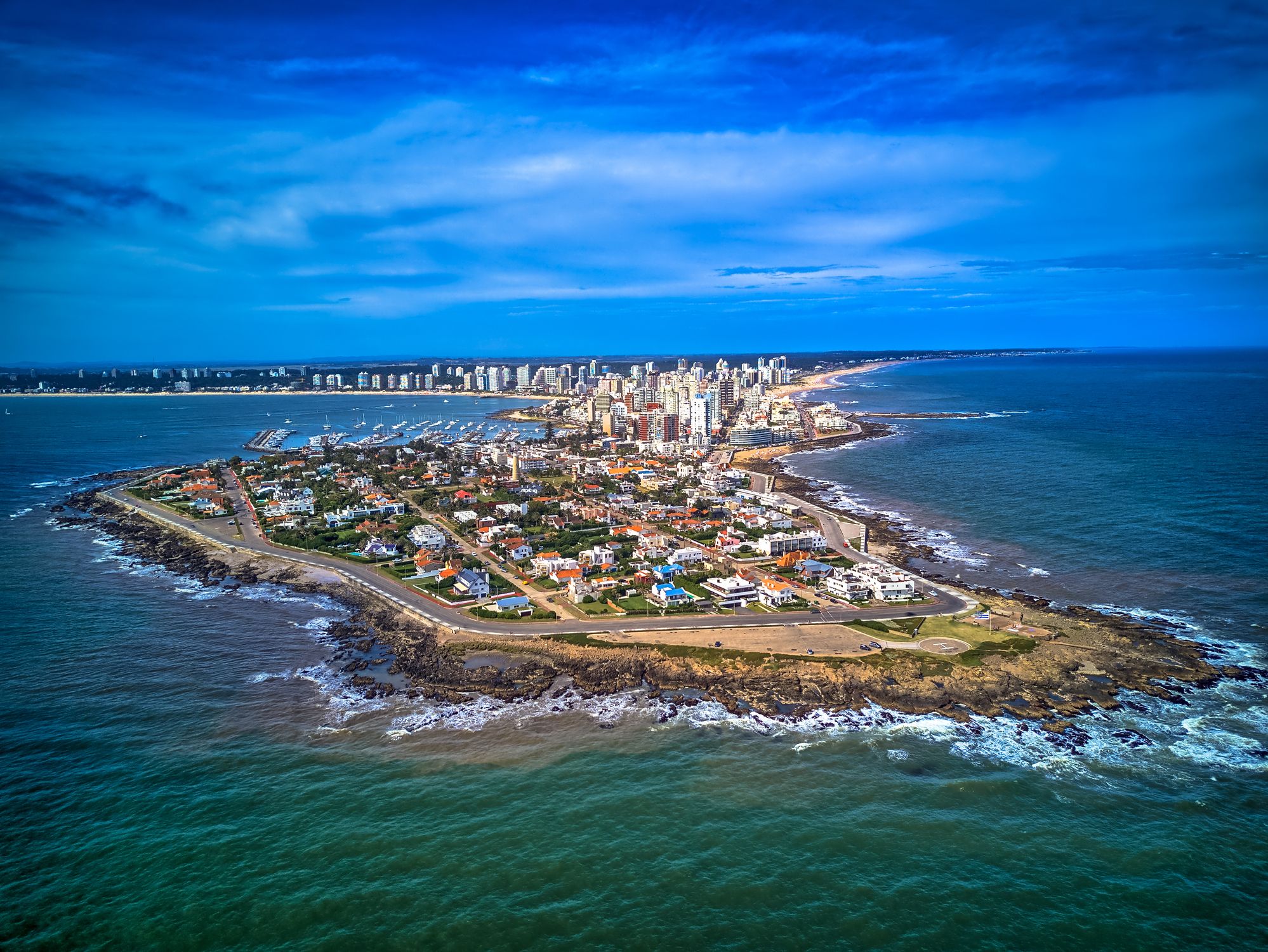
Punta del Este — Uruguay’s Premier Resort on the Atlantic Coast
Punta del Este is one of South America’s most renowned resort cities, located on Uruguay’s southern coast where the Atlantic Ocean meets the Río de la Plata estuary. The city is known for its unique contrasts—on one side, upscale neighborhoods with modern skyscrapers, yachts, and gourmet restaurants, and on the other, tranquil sandy beaches, scenic dunes, and surf-friendly waves. It’s often dubbed the “Monaco of South America” for its luxurious infrastructure and popularity among international celebrities.
Beyond the beaches, Punta del Este offers both cultural and natural attractions: the iconic “La Mano” sculpture, the Ralli Museum of contemporary art, and nearby islands home to sea lions. Visitors can explore the bohemian district of La Barra or enjoy sunset views by the Punta del Este lighthouse. The city comes alive during the summer season (December to February), when tourists from around the globe arrive in search of sunshine, comfort, and vibrant nightlife.



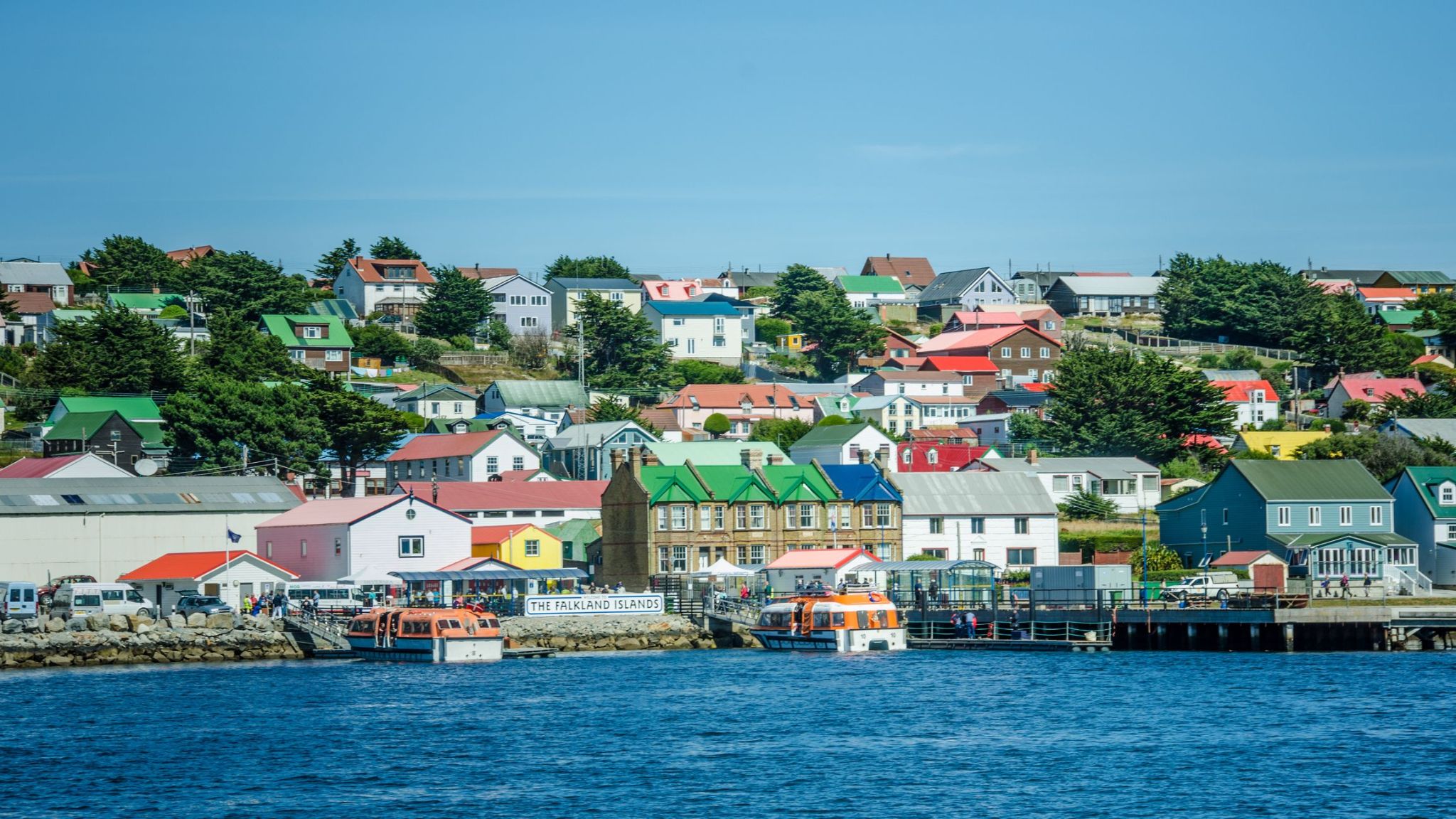
Port Stanley — The Edge of the World with a British Touch
Port Stanley is the main city and administrative center of the Falkland Islands, located on the eastern coast of East Falkland Island. It is the southernmost capital of the United Kingdom and one of the most sparsely populated capitals in the world, with around 2,500 residents. The city surprises with a harmony between wild nature and recognizable British traits: here you can find red phone booths, cozy pubs, English-style houses, and well-maintained gardens.
Surrounded by stunning landscapes of hilly plains, picturesque bays, and penguin colonies, Port Stanley offers unique views. The city also has an interesting museum dedicated to the history of the archipelago and the 1982 military conflict. This unique destination attracts nature lovers, those seeking tranquility, and travelers looking for unusual routes — it’s a place for those seeking true isolation at the edge of the world.





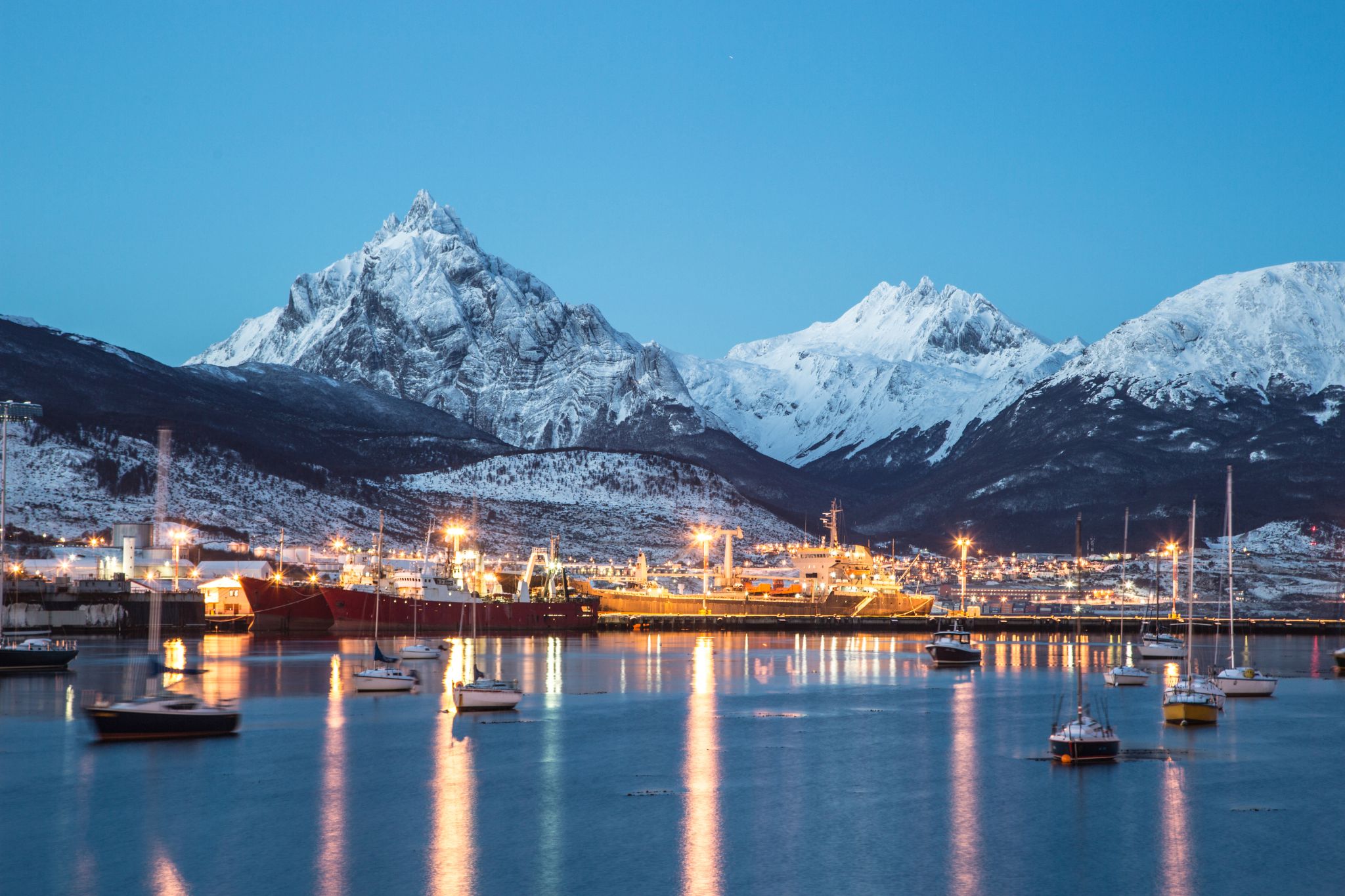
Ushuaia is the capital of Tierra del Fuego, Antártida e Islas del Atlántico Sur Province, Argentina. It is commonly regarded as the southernmost city in the world. Ushuaia is located in a wide bay on the southern coast of Isla Grande de Tierra del Fuego, bounded on the north by the Martial mountain range, and on the south by the Beagle Channel. It is the only municipality in the Department of Ushuaia, which has an area of 9,390 km2 (3,625 sq mi). It was founded October 12 of 1884 by Augusto Lasserreand is located on the shores of the Beagle Channel surrounded by the mountain range of the Martial Glacier, in the Bay of Ushuaia. Besides being an administrative center, it is a light industrial port and tourist hub.


Ushuaia is the capital of Tierra del Fuego, Antártida e Islas del Atlántico Sur Province, Argentina. It is commonly regarded as the southernmost city in the world. Ushuaia is located in a wide bay on the southern coast of Isla Grande de Tierra del Fuego, bounded on the north by the Martial mountain range, and on the south by the Beagle Channel. It is the only municipality in the Department of Ushuaia, which has an area of 9,390 km2 (3,625 sq mi). It was founded October 12 of 1884 by Augusto Lasserreand is located on the shores of the Beagle Channel surrounded by the mountain range of the Martial Glacier, in the Bay of Ushuaia. Besides being an administrative center, it is a light industrial port and tourist hub.
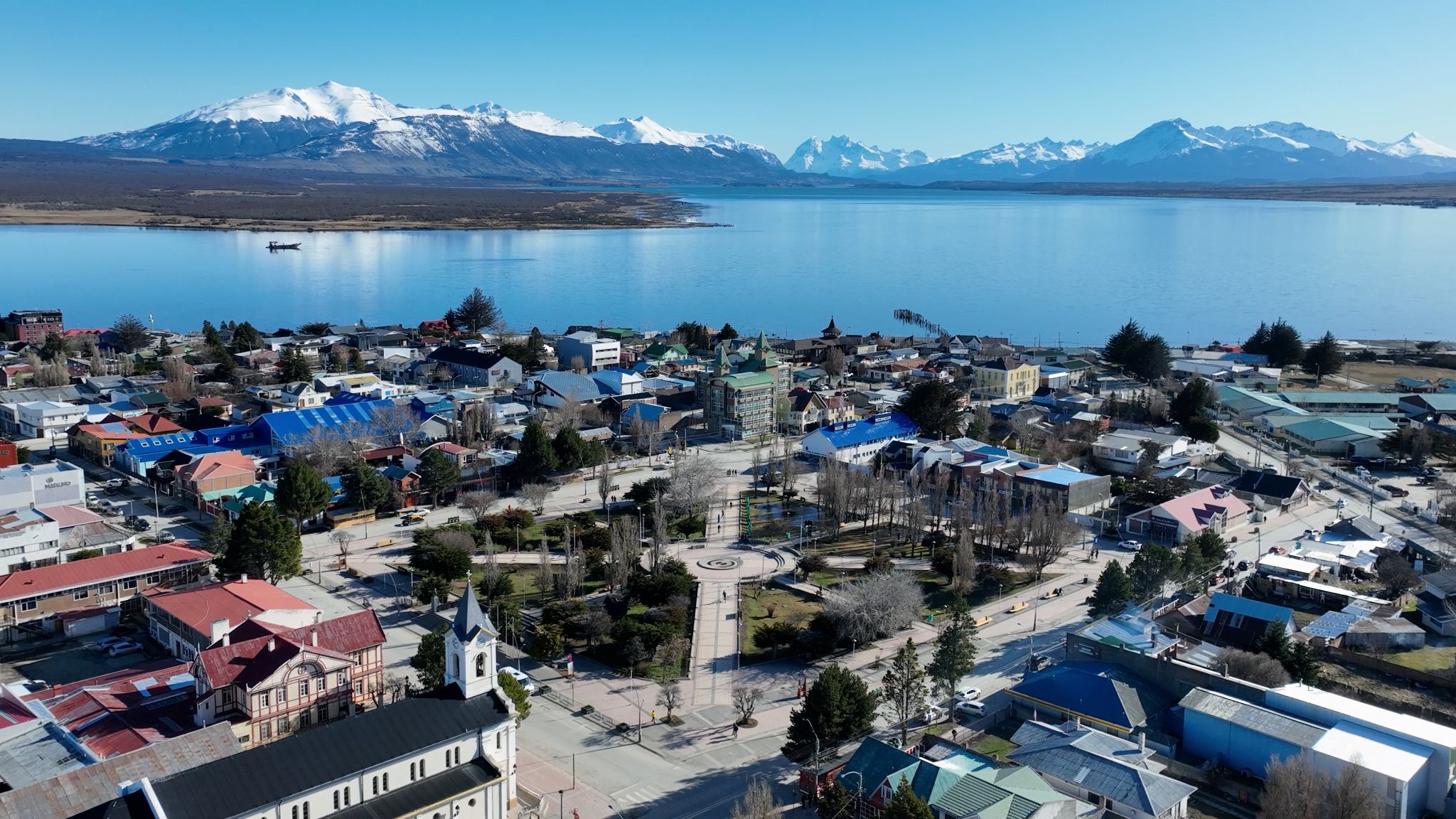
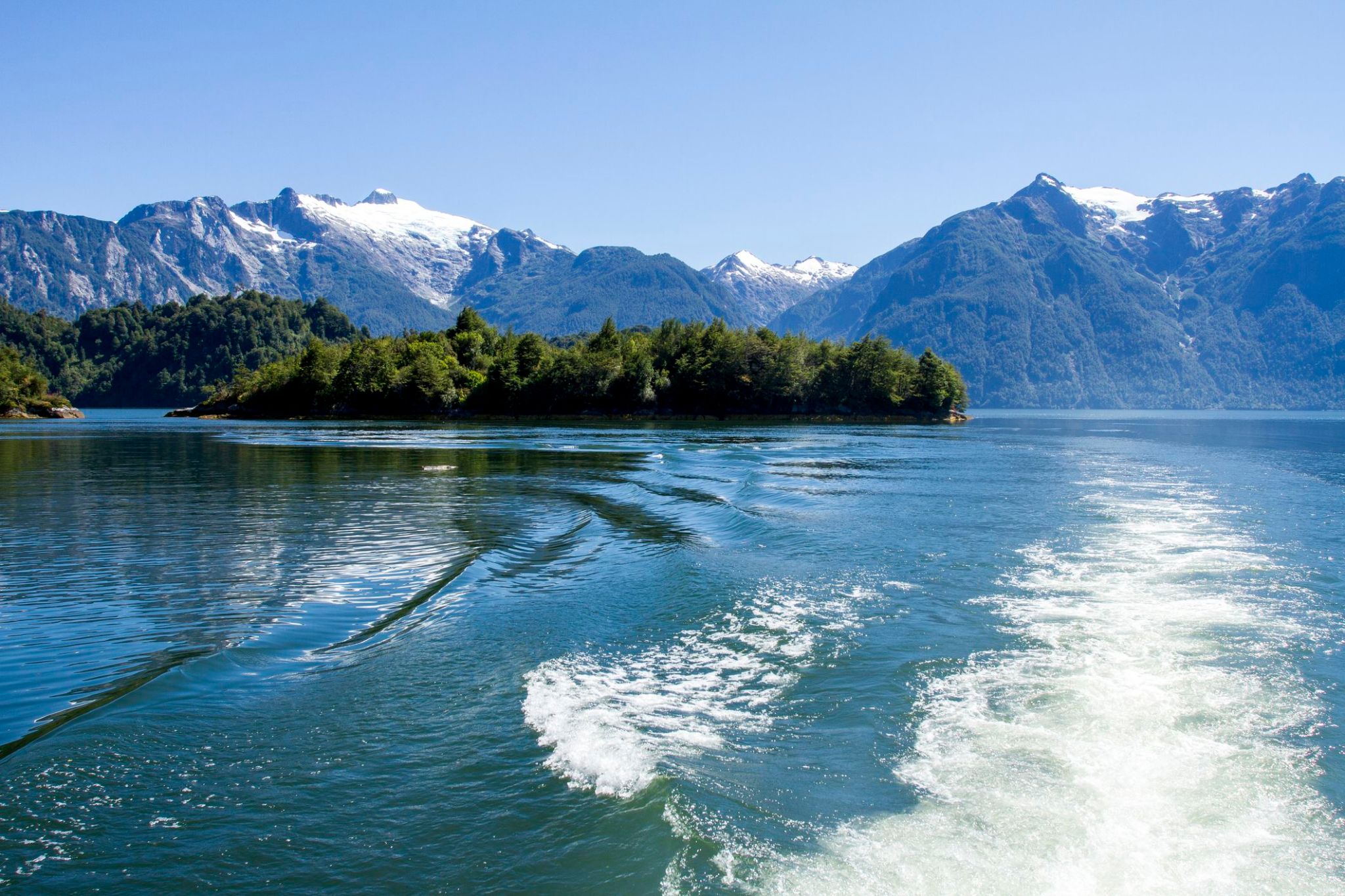
Not only Europe can boast the enchanting nature of the Norwegian fjords, but also Chilean fjords. The Chilean fjords consist of islands of various sizes, islets, enormous boulders, and ice formations emerging from the water, showcasing a range of colors — from snow-white to greenish. The glaciers on the rocks and mountain slopes create the feeling of theatrical scenery. The Chilean fjords delight visitors with their landscapes, where land and sea merge into a labyrinth of islands, fjords, rivers with tributaries, lakes, and hills covered in ancient trees.
The Chilean fjords are a unique place that has miraculously escaped human interference. When the mist dissipates under the sun, a magnificent panorama of the Andes, the cold waters of the Pacific Ocean, and lush emerald forests unfolds before your eyes.

Not only Europe can boast the enchanting nature of the Norwegian fjords, but also Chilean fjords. The Chilean fjords consist of islands of various sizes, islets, enormous boulders, and ice formations emerging from the water, showcasing a range of colors — from snow-white to greenish. The glaciers on the rocks and mountain slopes create the feeling of theatrical scenery. The Chilean fjords delight visitors with their landscapes, where land and sea merge into a labyrinth of islands, fjords, rivers with tributaries, lakes, and hills covered in ancient trees.
The Chilean fjords are a unique place that has miraculously escaped human interference. When the mist dissipates under the sun, a magnificent panorama of the Andes, the cold waters of the Pacific Ocean, and lush emerald forests unfolds before your eyes.
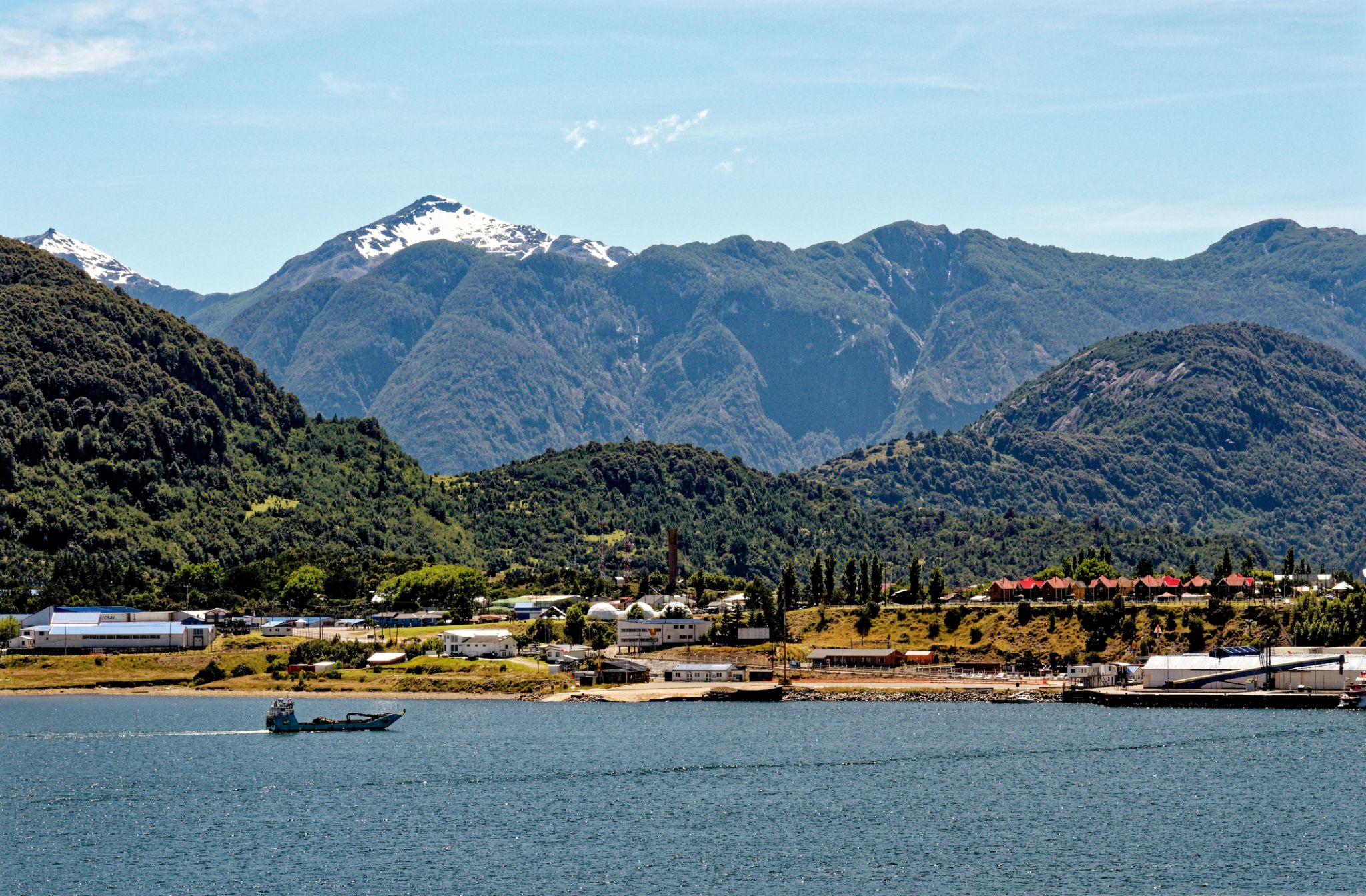
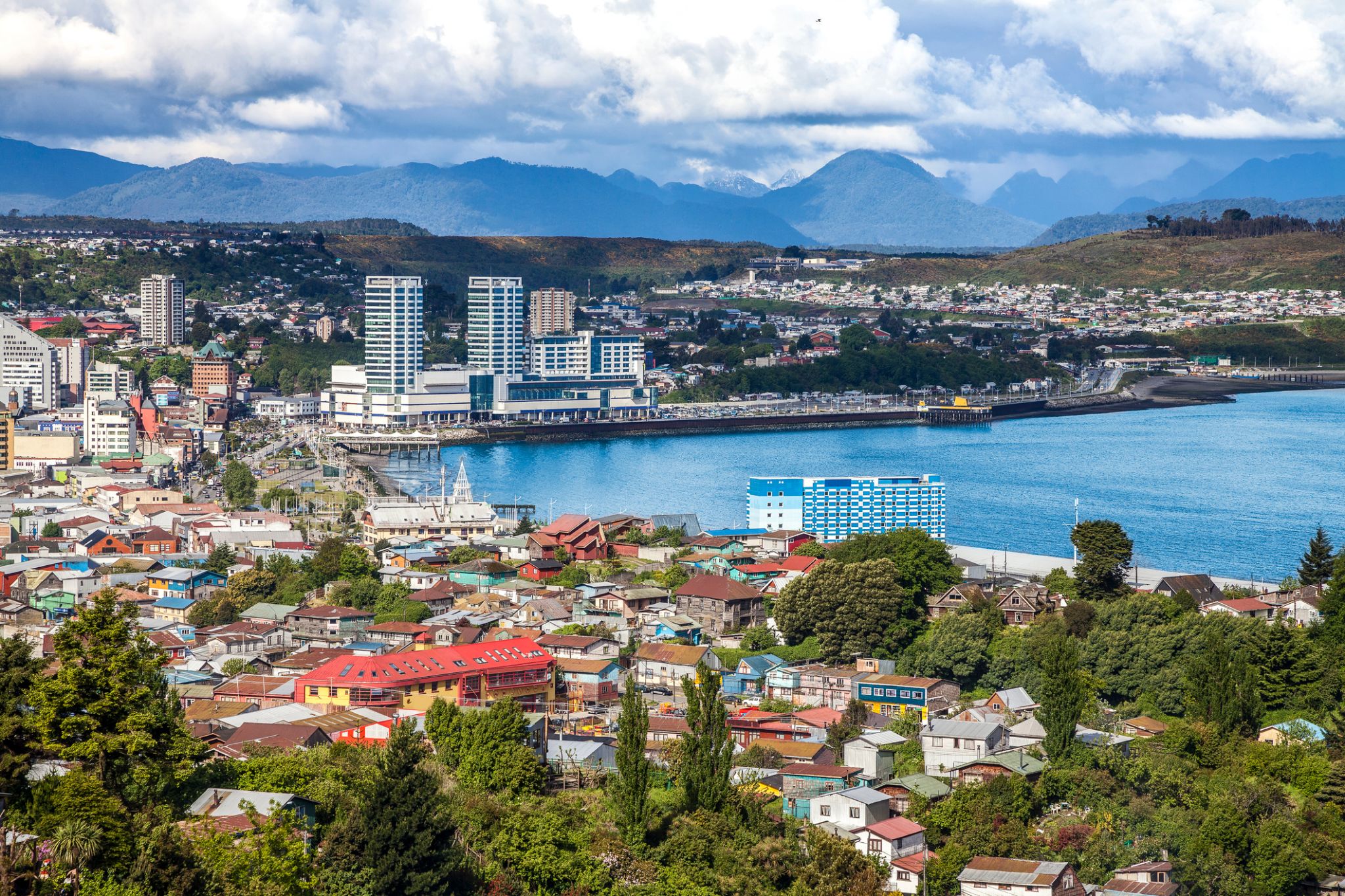
Puerto Montt is a port city and commune in southern Chile, located at the northern end of the Reloncaví Sound in the Llanquihue Province, Los Lagos Region, 1,055 km to the south of the capital, Santiago. The commune spans an area of 1,673 km2 (646 sq mi) and has a population of 245,902 in 2017. It is bounded by the communes of Puerto Varas to the north, Cochamó to the east and southeast, Calbuco to the southwest and Maullín and Los Muermos to the west.
Founded as late as 1853 during the German colonization of southern Chile, Puerto Montt soon outgrew older neighboring cities due to its strategic position at the southern end of the Chilean Central Valley being a gateway city into Chiloé Archipelago, Llanquihue and Nahuel Huapi lakes and Western Patagonia.
Puerto Montt has gained renown and grown significantly due to the rise of Chile as the second largest salmon producer of the world during the 1990s and 2000s. However, the Chilean salmon aquaculture crisis of the late 2000s resulted at least temporarily in severe unemployment and exposed weaknesses in the local economy. The city's cultural heritage mixes elements of Chiloé culture with German heritage although the city has attracted a significant number of newcomers from all over Chile in the last 30 years due to employment opportunities.

